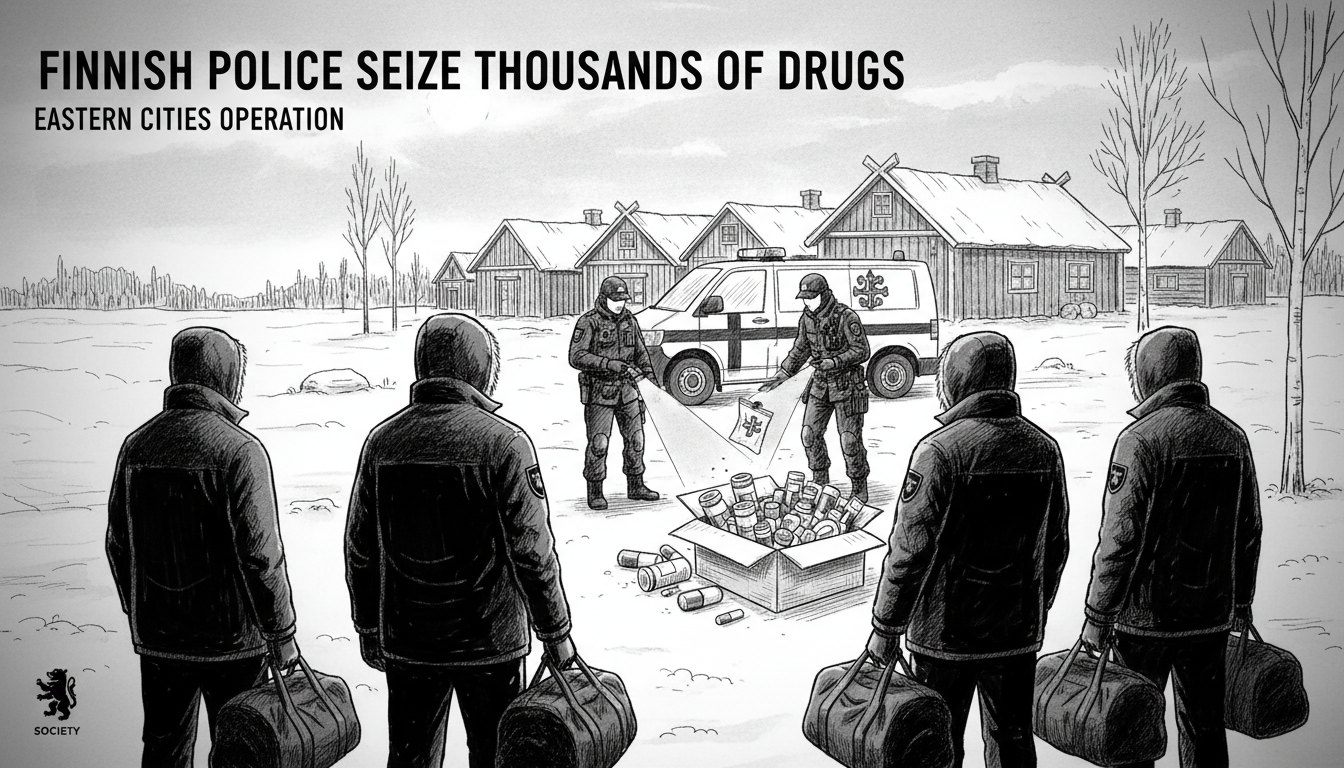Finnish authorities conducted major drug enforcement operations in two eastern cities during November, resulting in five arrests and substantial narcotics seizures. Police apprehended suspects in coordinated actions targeting prescription medication and stimulant distribution networks across the region.
In Kuopio's travel center on Tuesday, November 4th, officers detained two individuals born in the 1990s. Authorities discovered 4,500 tablets of Ksalol, 266 Subutex tablets, and 80 Oxycontin tablets in their possession. These benzodiazepine and opioid medications require prescription in Finland but circulate illegally through underground markets.
Three additional suspects faced arrest in Varkaus on Sunday, November 23rd. Police seized approximately half a kilogram of amphetamine and about 10 grams of cocaine from men born in the 1990s and early 2000s. Investigators treat these cases as separate serious drug offenses while noting a common connection to the capital region as the suspected source.
Eastern Finland Police Department confirmed these represent their most substantial recent drug investigations. The operations demonstrate Finland's ongoing struggle with pharmaceutical diversion and stimulant trafficking despite the country's traditionally low drug use rates compared to other European nations.
Finland maintains strict drug policies through its Criminal Code, with severe narcotics offenses carrying maximum sentences of ten years imprisonment. The Finnish approach combines enforcement with harm reduction, though recent years show increasing concern about organized crime's role in drug distribution.
These seizures highlight several ongoing challenges in Finnish drug policy. Pharmaceutical medications increasingly appear alongside traditional street drugs in illegal markets. The connection to the Helsinki region reflects broader patterns where metropolitan areas serve as distribution hubs for regional networks.
Police investigations continue to determine the precise origins and distribution methods of these substances. The substantial quantities suggest organized activity rather than individual user possession, indicating possible connections to larger criminal networks operating across Finland.
Finnish drug enforcement faces particular challenges in balancing prevention, treatment, and interdiction strategies. These cases demonstrate both the effectiveness of targeted police work and the persistent nature of drug trafficking despite comprehensive control measures.
International readers should understand that Finland's drug situation differs markedly from other European countries. The nation maintains lower prevalence rates but faces increasing pressures from transnational trafficking networks. These operations represent ongoing efforts to contain that threat while maintaining Finland's public health approach to substance abuse.

